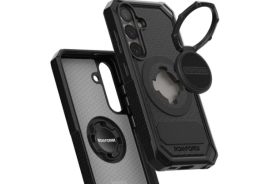The battle of the smartphone biggies is intensifying with both Apple and Samsung leaving no stone unturned to up their user-likeability quotient. Considering that analysts at Well Fargo, are pitching the smartphone goliath-in-waiting - the iPhone 5 - as "the biggest product launch in consumer electronics history" and with the rumored in-cell display in its kitty, Samsung's Galaxy S3 could soon be running for cover.
The Wall Street Journal, citing sources familiar with the matter, had reported on July 17 that "Japanese liquid-crystal display makers Sharp Corp. and Japan Display - a new company that combined three Japanese electronics makers' display units - as well as South Korea's LG Display Co. are currently mass producing panels for the next iPhone using so-called in-cell technology".
The publication also noted that the shift from the current "on-cell" to "in-cell" technology would simplify Apple's supply-chain logistics. Apple would now only have to handle one in-cell panel supplier rather than the previous two (for the touch panels as well as the LCD screen). Moreover, the switch would also enable Apple to tout a thinner phone.
In on-cell technology, the touch sensors are on top of the color filters and occupy a separate layer, adding fractionally, 0.5mm in the current iPhone, to the design's thickness. Contrastingly, the in-cell technology deploys touch sensors that are inside the color filters. This feature eliminates the extra layer and considerably slims down the touchscreen interface.
Currently, the 3.5-inch iPhone 4/4S is 9.3mm deep and the anticipated in-cell technology for the iPhone 5 would shave off a further 0.5mm at the very least. KGI Securities analyst Ming Chi-Kuo suggested in an April note that by switching back to a metal back face from the current glass one, Apple's next iPhone could be well under 8mm. According to Kuo, the new back piece could take off at least 1mm. The 14% depth reduction would also aid a brighter display.
In today's day and age of small is beautiful and where sleekness and niftiness of a gadget is defined by sheer size, even a marginal decrease in size can make a huge difference. The in-cell technology puts the iPhone 5 in driving seat with the in-cell panels bringing about major improvements vis-a-vis the traditional Super AMOLED and LCD technologies. With several marked improvements in its kitty, the iPhone 5 poses to be a threat for the currently popular Galaxy S3.
The anticipated changes would undoubtedly pip Apple's challenge to the Samsung Galaxy S3, which is currently making waves in the smartphone world. With Foxconn leader Terry making statements like the iPhone 5 will "put Samsung's Galaxy S3 to shame" when it ships, Apple has plenty to prove when the fable iPhone 5 launches in fall this year.
© Copyright 2025 Mobile & Apps, All rights reserved. Do not reproduce without permission.












